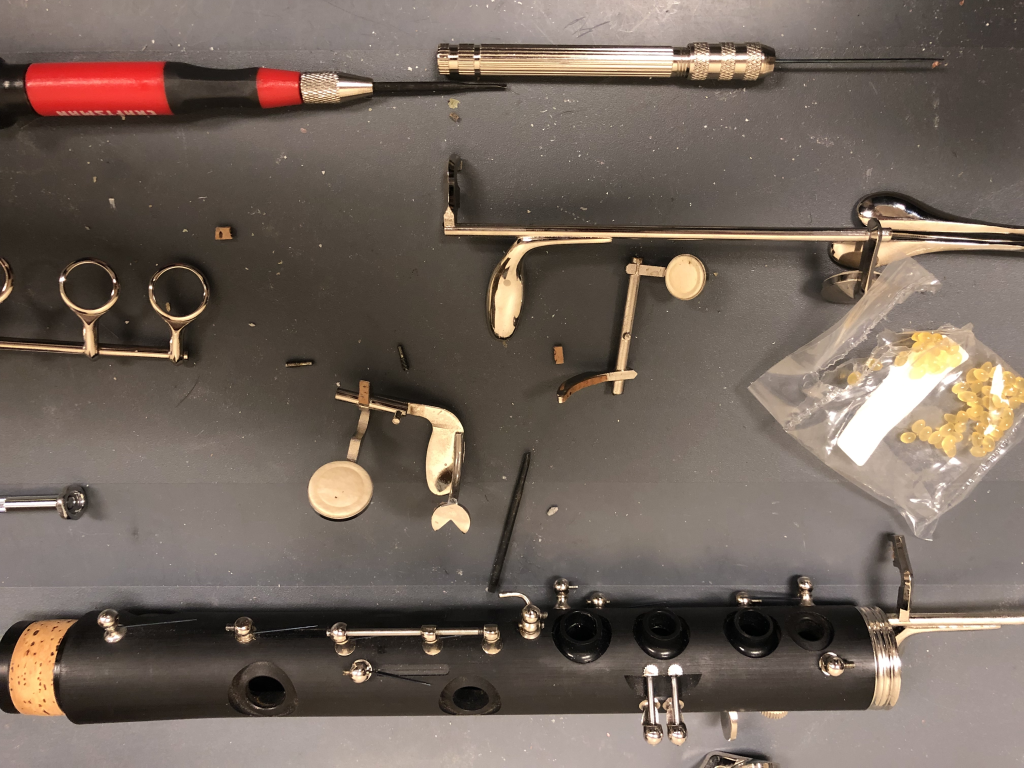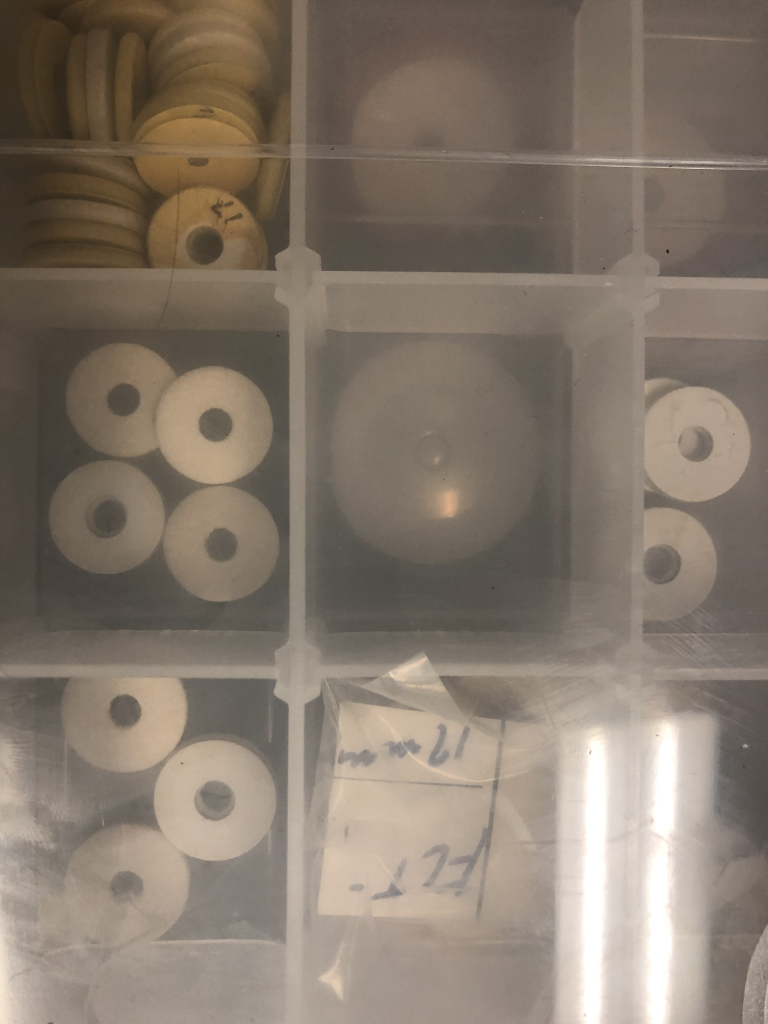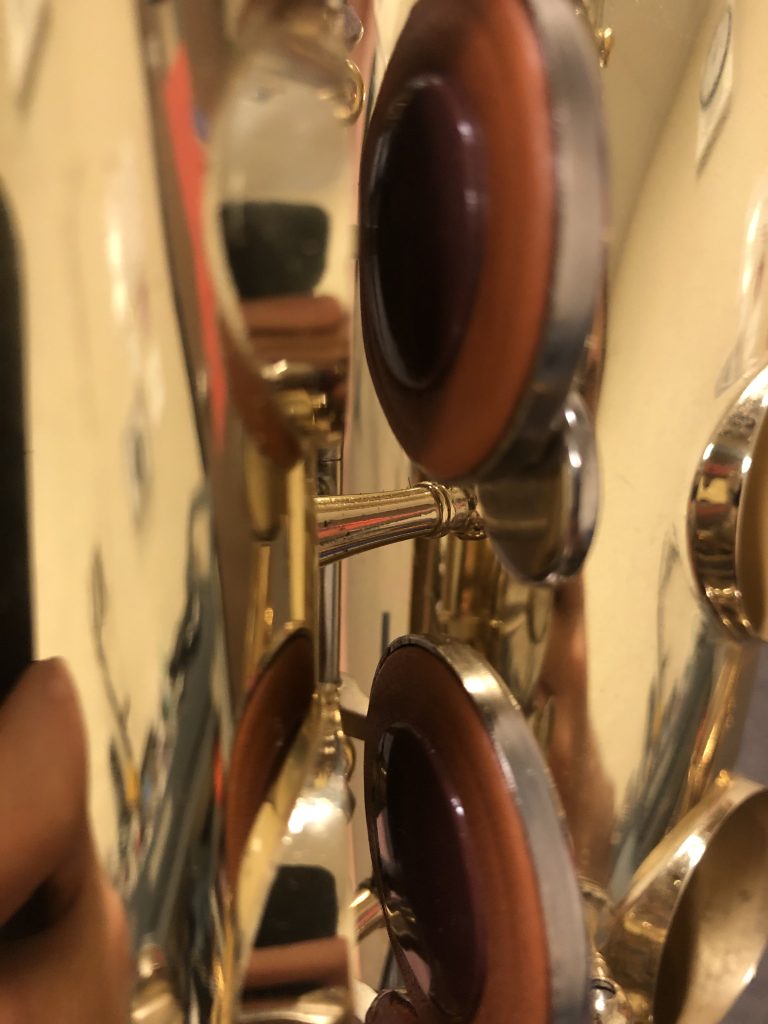The Creative Wire
How to Talk to Your Instrument Tech
June 18, 2024 | by Josiah Sytsma
Edited by Sarah Thomas
The first time I picked up the alto saxophone in sixth grade band, two thoughts went through my mind: (1) I want to be the best and (2) I want to play tenor saxophone. I practiced not enough, but certainly more than the other students in my class. In early 2006, about six months after I joined the band, I asked my band director if I could switch to tenor saxophone. The first sounds I made on the school’s tenor saxophone felt good. I had supreme low note power. My elation, however, was not to last. The first time I tried to play a high A, the instrument made a very debilitated “euuugh” and my band director told me to go practice in the practice room. Half an hour later, she forgot I was there and sent two of her favorite clarinet players in to practice something else. My heart was broken. One does not become the best with high A’s that go “euuugh.” When a repair technician visited our school several weeks later, I was embarrassed when I was told I wasn’t taking good care of my instrument (it wasn’t mine and it was in that condition the first time I played it).
As a fledgling undergraduate saxophone major, the tenor saxophone my parents purchased for me in high school—a beautiful 1937 Conn 10M “Naked Lady”—was difficult to play and quite inconsistent. I struggled to play low notes and the hard work I put into long tones to fix my embouchure problems went only so far. In the summer of 2013, I put every penny of my savings into hiring a tech named Wil Grizzle to fix my saxophone. Wil worked out of his basement in Lawrenceville, GA and graciously agreed to let me hang around his shop and ask him questions while he worked. Eventually, this evolved into an apprenticeship where I spent the summer learning about instrument repair by working on my saxophone.
I started my own repair service about a year later, once I had collected a bare-minimum set of tools I could start with and supplement as needs arose. Wil gave me an assortment of saxophone, flute, and clarinet pads to jump start my business. I started with working on small repairs like pad and key/tenon/neck cork replacements. After graduation, I took on more work by calling school band directors and offering to service their inventory for next to nothing. After becoming a full-time band director at a charter school in Las Vegas, NV, I applied for a business license and began offering steeply discounted repair services to my students who owned their instruments.

As conservatory students, having a level of understanding of repairing and maintaining your instrument is invaluable. Over time, our instruments start to wear. For vocalists this might be purely physiological. Avoiding strain and practicing correct vocal technique is an essential part of learning to perform. With an instrument, it can be easy to make unconscious adaptations to a less-than-optimal setup. However, when an instrument is well maintained and in good working order, the experience is significantly better, and we can spend more time adjusting for musicality rather than to force the instrument to play.
Instrument repair is a lot of careful, patient work. Most of my time is spent on pad fitting, which I do in three stages. First, to prepare for a pad replacement, the adhesive holding the pad in the key cup needs to be loosened by heating the key cup. Technicians use a clean heat source—typically a low output butane torch (think of the kind one might use to make a Crème Brûlée), though some shops use an electric pad cup heater. Alcohol lamps work for this purpose as well, but are generally ill-advised due to an increased fire hazard risk. Once the pad is removed from the key cup, it is measured with a caliper at half-millimeter precision so the replacement will fit perfectly.
Sometimes the key cup is dented and needs to be rolled out or leveled on a jeweler’s anvil. Sometimes the key arm needs to be very carefully bent so the pad seats evenly—meaning that as the key closes, the pad contacts each part of the tone hole at exactly the same time and there are no spaces for air to leak out. The preparation from dry fitting is an essential part of the process and ensures that when pads are seated with adhesive, everything will fit properly after the floating stage.
Floating consists of using a leak light on saxophones, bass clarinets, and bassoons, and cigarette paper with other, smaller woodwinds. Leaks on larger instruments show as slivers of light from the leak light as the key closes. With smaller instruments, areas of the pad that the cigarette paper can fit under signify a leak. Once the leaks are identified, the pad cup is heated again, and the pad is pushed or pulled on the pool of melted shellac underneath. This process is repeated many times until every part of the pad contacts the tone hole at the same time and there are no more leaks. The satisfaction from getting a pad floated just right is incredibly gratifying, as is the sound of clicking the keys on a finished saxophone. The instrument makes a resonant “thoooom” when fingering a low B-flat if every key seats perfectly. I save this part for last and if the instrument does not sound resonant enough, I check every key again.


The process to find a reliable tech can be daunting. When choosing a tech, make sure you discuss the cost upfront before agreeing to any work and get a written agreement. In my first year of undergraduate, I was overcharged for service on a flute because I did not have an upfront written cost when I took it to a local shop. You can also ask to examine their rental fleet if they have one or an example of work recently returned from a repair. Finally, do not be afraid to ask questions. Ask for time and cost estimates, a summary of the repairs, what options you might have for materials like pads, and what the difference in price is. A skilled technician will communicate with you about the process, the material cost, and labor. For small repairs that take minimal time or have no material cost I will often offer to fix during a service assessment and will offer to complete the repair then at no cost with the customer’s permission. Some technicians specialize in particular services. I cannot, for example, do mouthpiece refacing or major dent repair but I am happy to recommend clients to other techs I trust who can provide these services. If you communicate your expectations with your technician, and something is not right after the service is completed, it is important to express your concerns.
In conclusion, having a well-maintained and properly functioning instrument is crucial for any musician, particularly for those studying at the conservatory level and/or working as professionals in the field. While instrument repair may seem like a daunting task, finding a reliable and skilled technician can make all the difference. By communicating openly with your technician, understanding the repair process, and being willing to ask questions, you can ensure that your instrument is in optimal condition, allowing you to focus on musicality and artistic expression rather than struggling with technical issues. Ultimately, investing in the care and maintenance of your instrument is an investment in your growth and development as a musician, and a necessary step towards achieving your full potential.
——————————————————————————————————————-

Josiah Sytsma
Composition
DMA 2027

Josiah Sytsma is a composer, woodwind repair technician, multi-instrumentalist, programmer, sound designer, and teacher. He is currently pursuing a DMA in music composition at the Peabody Institute with a cognate in computer music.